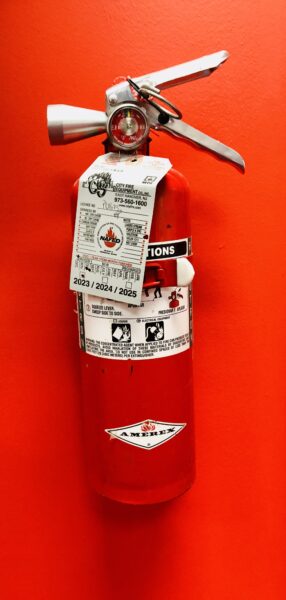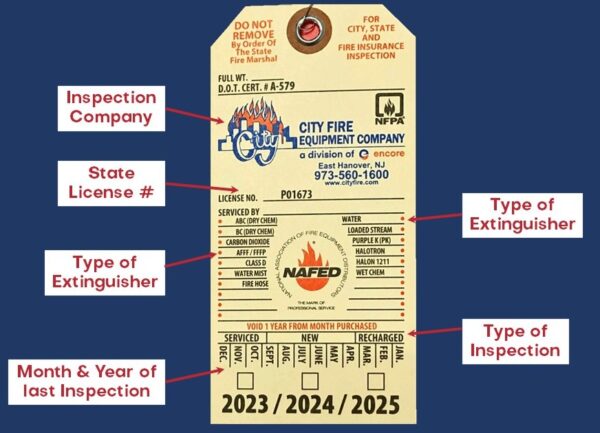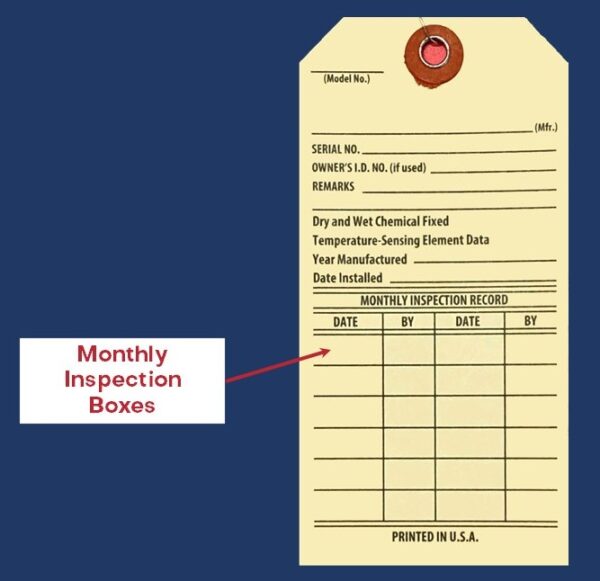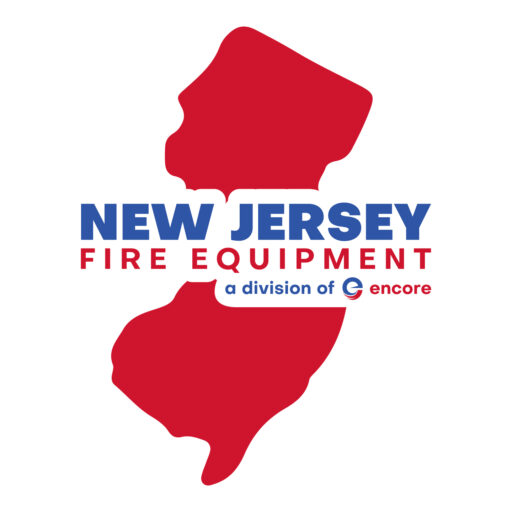Fire extinguishers play a crucial role in fire safety, and it’s essential to ensure they are in proper working condition. One way to determine a fire extinguisher’s status is by reading the information on its tag. This week, we will walk you through how to read a fire extinguisher tag and understand the vital details it provides in keeping your employees/tenants and property safe.

1. Location of the Tag:
The first step is to locate the fire extinguisher tag. The tag is typically attached to the extinguisher’s body and can be found in a prominent position, such as near the handle or pressure gauge. It’s usually a heavy paper tag with important information printed on it: such as, company that did the inspection, type of extinguisher, what the last inspection type was, and the month and year of that last inspection.
2. Type of Extinguisher:Look for the fire extinguisher’s type, often indicated with a letter or letters, such as “A” for ordinary combustibles, “B” for flammable liquids, “C” for electrical equipment, “D” for combustible metals, and “K” for kitchen fires. There are also special hazard types like Halon, Water Mist, and Purple K that are to be used in specific situations. Understanding the extinguisher type is crucial because using the wrong type on a fire can be ineffective or even dangerous.
3. Inspection and Maintenance Dates:
Fire extinguisher tags all have a section for recording inspection and maintenance dates. There may be spaces for “serviced,” “new,” and “recharge” dates. These dates are vital to ensure that the extinguisher has been regularly maintained and is in proper working condition. They also let the next person that is going to inspect the unit what the last inspection type was and what they need to do for this current inspection.

4. Expiration Date:
All tags come with an expiration date that is near the bottom of the tag. You will see a month and year hole punched out that show when the last inspection took place. Unless required differently by your local inspector/AHJ, your tag is good for 1-year from that month and date. So, an extinguisher punched for January 2023 is good until the end of January 2024. I recommend that you check to see what month and year are punched on your extinguishers, because if your unit is still punched with a 2022 year, there is a good chance that they are either overdue for service or will be due here in the last 2 months of 2023. If you find unit(s) that are due, please give us a call at 973-560-1600 to make an appointment to get your tags updated before they expire.

5. Monthly Inspections
More and more we are finding that some inspectors/AHJs are asking for monthly inspections on fire extinguishers. According to the NFPA code, this can be done by the property owner or their designated representative. On the back of an extinguisher tag you will find a spot for “monthly inspection record”. This is a visual check only of the extinguishers. You are looking to make sure there is no damage to the unit, its pressure is still in the green section on the gauge, and that the tag is still affixed properly. Basically, you are looking to see if the unit is still there and that nothing has changed since the last time it was checked.
There are 12 spots for you on the back of the tag where you can keep a record on the tag of when that check took place. This helps you as the property owner or manager to keep an eye on your units and see if anything has changed in the last 30 days. It also helps remind you when to get your annual, full inspection from your licensed extinguisher company.
In conclusion, understanding how to read a fire extinguisher tag is essential for fire safety. Regularly inspecting and maintaining your fire extinguishers can make the difference between a minor fire incident and a potential disaster. Be sure to familiarize yourself with the information on the tag, conduct routine inspections, and consult with a professional if you have any concerns about your fire extinguishers. Fire safety is everyone’s responsibility, and knowing how to use this vital tool is a step in the right direction.
Bonus Content: What is a Fire Extinguisher Rating?
On each extinguisher’s printed sticker label (not on the tag) you can find out its use rating. Fire extinguishers are classified based on their effectiveness against different types of fires. The tag should display a rating, such as “1A:10B:C.” In this example, “1A” indicates the extinguisher’s effectiveness against Class A fires, “10B” for Class B fires, and “C” for Class C fires. The higher the number, the more effective the extinguisher is for that class of fire. Check with your local fire inspector, sometimes called the AHJ (Authority Having Jurisdiction) to see if your town requires a minimum rating level for apartments, condos, homes, and businesses.
Dan has been around the fire equipment industry almost his whole life. His father, Robert, was the owner of Kamp Fire Equipment in Paterson, NJ and a founder of NJ Fire Equipment in Rockaway, NJ. He learned to use a computer by entering paper invoices into an electronic spreadsheet. Now Dan leads the Marketing efforts for Encore Fire Protection in their East Hanover, NJ location.
